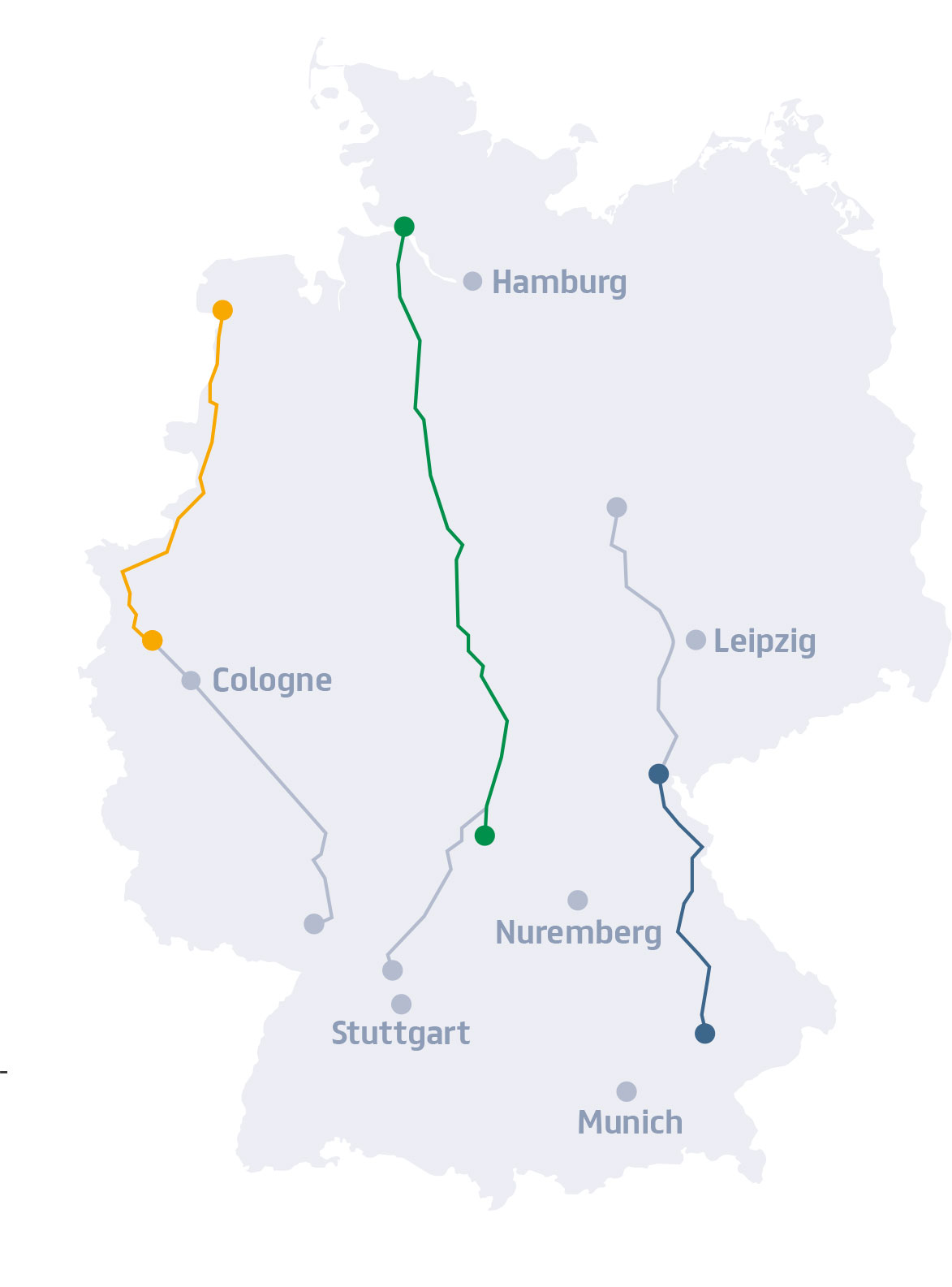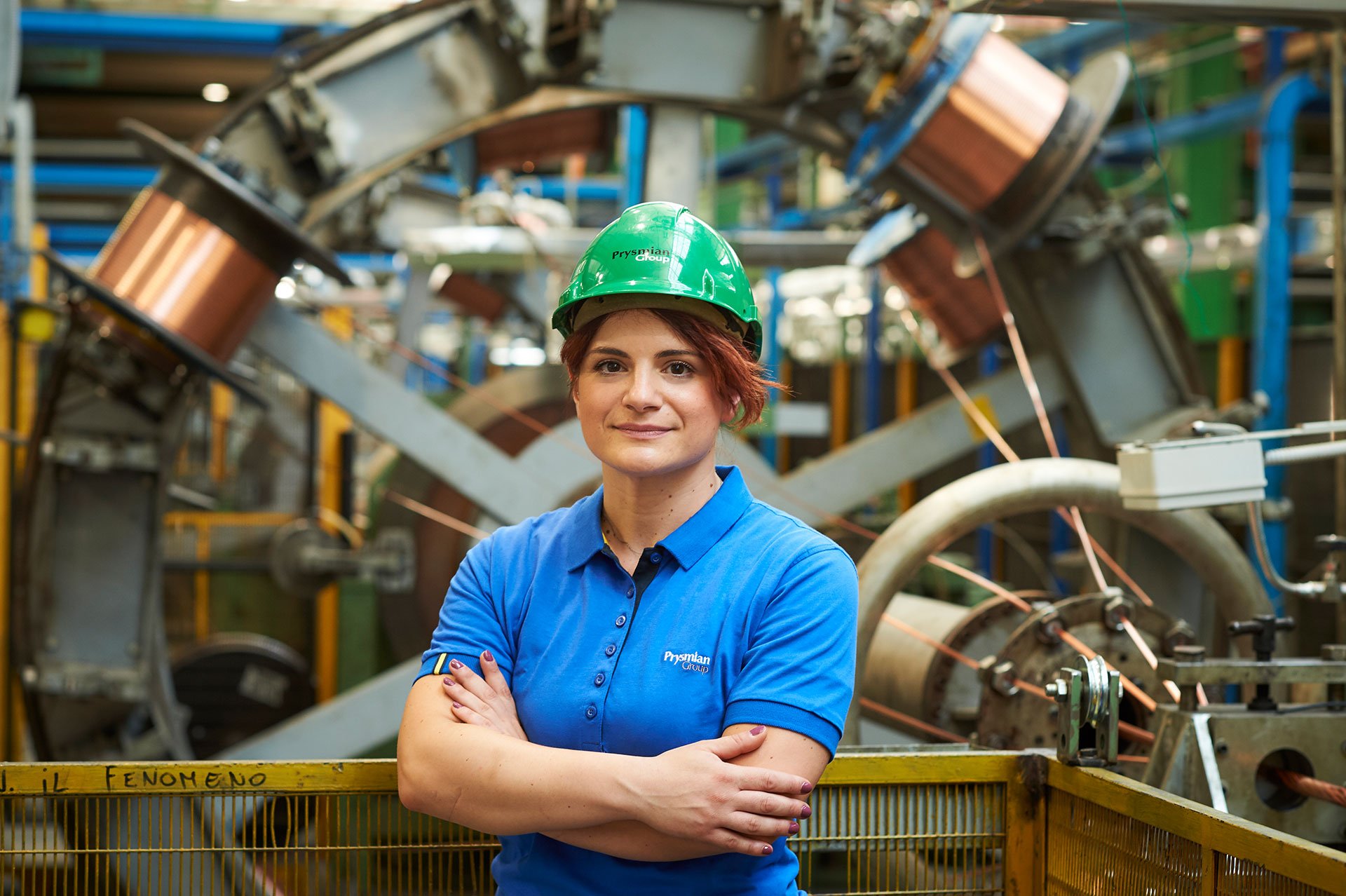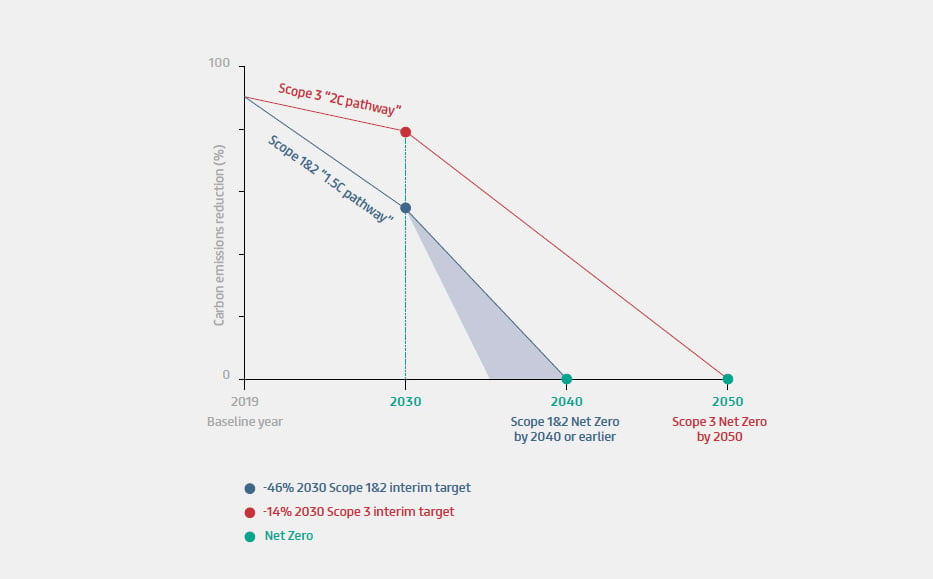Climate change is the core global challenge that human societies are presently facing. Deep decarbonization must be achieved to tackle this challenge. The collective response has been a call for the expansion and integration of renewables. This white paper illustrates the energy transition mega trends, explaining how efficient, smart and green power grids are essential to succeed in this process, and describing how Prysmian Group can be a game changer in this scenario.
In fact, the transition towards renewable energy is very much linked to the capability to transmit and dispatch energy from one place to another, from where clean energy is produced, as for example the North Sea, to where it is consumed, as the urban centers in Central Europe. The development of more reliable and capable grid infrastructures for power transmission and distribution is key for the integration of renewables.
Prysmian is fully committed to do its part in this collective engagement to save the climate. With almost 150 years of experience, sales of over €12 billion, about 29,000 employees in 50 countries and 108 plants, we are world leaders in the energy and telecom cable systems industry.
We operate in the business of underground and submarine cables and systems for power transmission and distribution, of special cables for applications in many different industries and of medium and low voltage cables for the construction and infrastructure sectors.
For the telecom industry, we manufacture cables and accessories for voice, video and data transmission, offering a comprehensive range of optical fibres, optical and copper cables and connectivity systems. As a company, we can play a crucial role in the global energy transition.
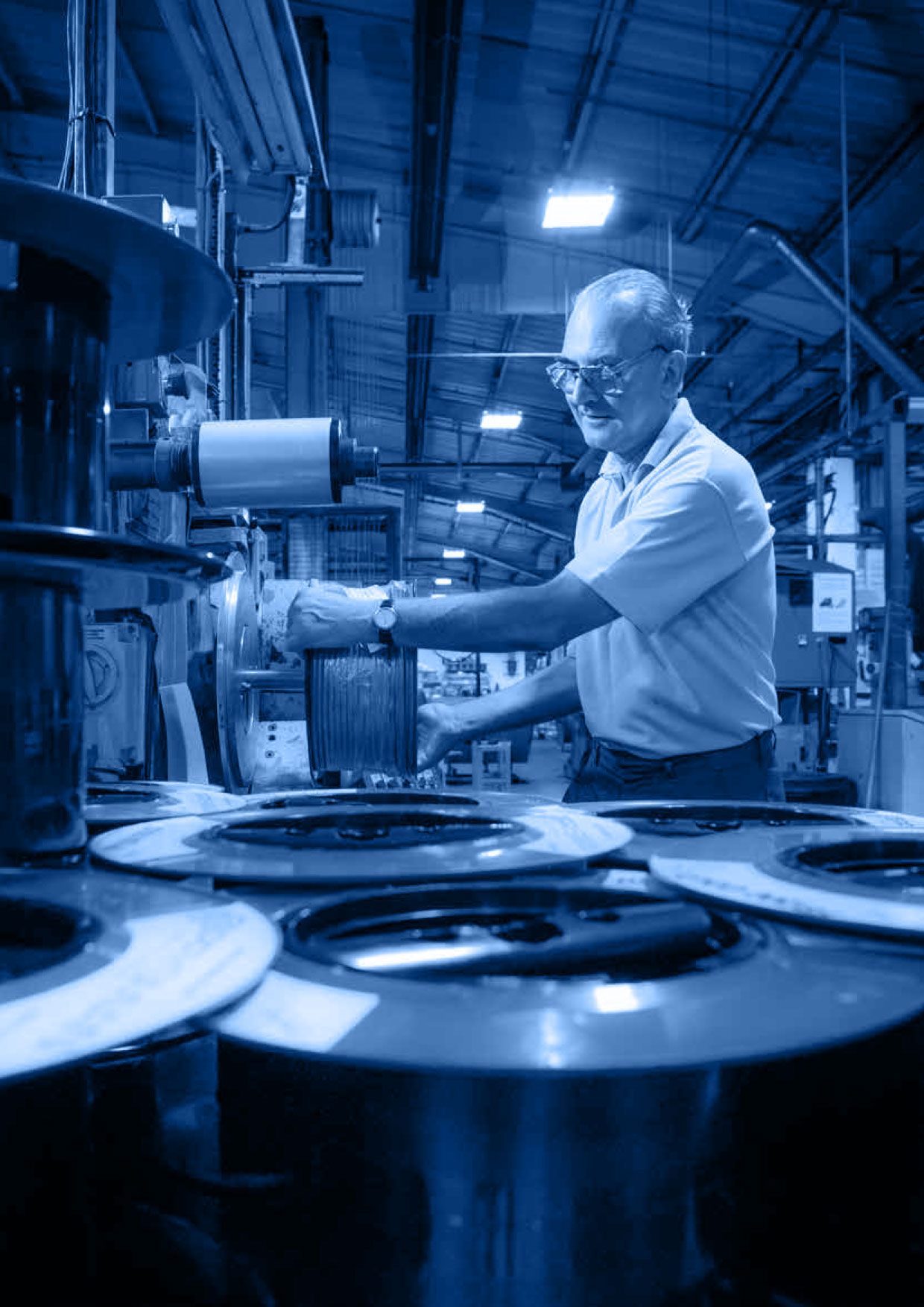
At Prysmian Group, innovation and sustainability are two sides of the same coin and a fundamental strategic approach to creating sustainable value for all stakeholders.
As an enabler of the energy and digital Transition, product and process innovation is a distinctive element of the Group’s identity and a fundamental driver to competing on the market and acting responsibly towards the environment.
Globally, Prysmian Group R&D consists of more than 900 professionals, working in 26 R&D centres around the world.
The R&D HQ, located near the Headquarters in Milan, coordinates the activities of local R&D centres and promotes breakthrough innovations via projects that take a medium/long-term approach.
It includes laboratories where development of new cables and technologies can be performed in full autonomy, being able to count on an experimental prototype room for production of cables and compounds, on an electrical testing facility, equipped with the most advanced systems for EHV cables testing, and a physical-chemical lab gifted with cutting-edge instruments dedicated to deeply analyze cables and materials properties.
Group R&D is responsible for the overall innovation strategy, aimed at making Prysmian a key player in the value chain supporting Energy Transition, Digitalization and Sustainability.
Slowing global warming is urgent because of its devastating impact on both nature and human beings.
That’s why 196 countries joined forces in 2015 with a pledge to slow global warming by cutting emissions and other steps by signing the Paris Agreement, the world’s first comprehensive climate change agreement.
The goal is to hold the increase in the global average temperature to well below 2°C above pre-industrial levels and to pursue efforts to limit the temperature increase to 1.5°C.
These goals can and must be met through the energy transition, that is already taking place, mainly in the power sector, where renewable energy now accounts for 26% of electricity generation worldwide and is rapidly increasing.
Over the past decade, it has become more economical to invest in new wind and solar power sources than building new fossil fuel power plants.
Yet, the necessary condition for a complete transition to renewables is a strong and interconnected grid.
This important journey, of which Prysmian willbe part in the next decades, will be successfulonly if governments will give priority to project financing schemes for renewable energy, as the European Union is already doing.
The outlook isvery positive, for eseeing a 3 times bigger marketin the next 5 years if compared to the past 5 years, mainly driven by the spectacular growth rate of wind power capacity, the increase of underground transmission and distribution within each country border, and the growing interconnections leading to grid optimization and energy transportation among and beyond European borders.
Cables and their related installation and maintenance are in fact a crucial part of all the main projects supporting the energy transition, giving Prysmian a unique positioning to be among the key enablers of a decarbonized future energy system.
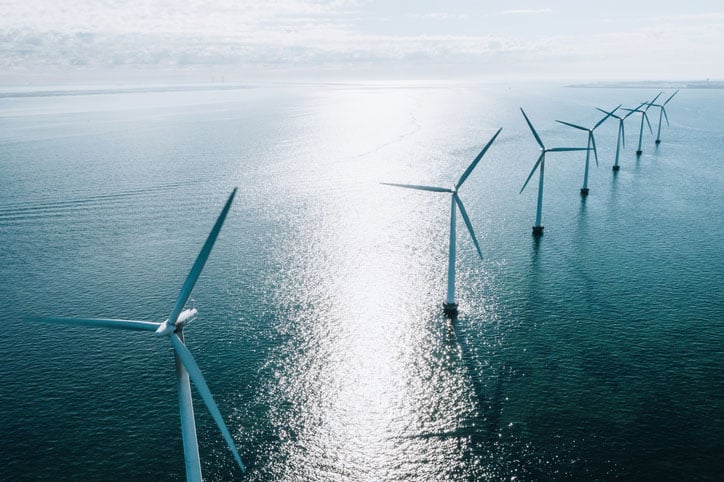
Never in history has an energy transition been attempted so quickly and under such dramatic conditions.
Throughout history, societies have gradually transitioned away from one energy source – say, from wood to coal.
Now in the space of just a few decades, countries across the world are working to replace fossil fuels with zero-carbon energy from clean sources like wind, solar and hydro to halt an unprecedented increase in temperature that major international scientific bodies have linked to carbon emissions from fossil fuels.
In today’s changing landscape for the electricity production, players attention is focused onenvironmental conservation and low carbon economy pushing to the development of many renewable projects worldwide and increasing reliance on renewable energy sources, such as hydro, wind (offshore and onshore), solar (photovoltaic and concentrated solar power), biomass, geothermal and tidal.
Slowing global warming is urgent because of its devastating impact on both nature and human beings. The impacts on nature are already visible and include rising sea levels, and extreme weather events like floods, droughtsand brushfires. For human beings, the health consequences of higher temperatures in the future could be severe, and issues of food security and migration could have dramatic political consequences and even lead to civil unrest.
The Intergovernmental Panel on Climate Change (IPCC), the United Nations body for assessing the science related to climate change, warns that global warming from pre-industrial levels must not exceed 1.5°C in order to avoid irreparable damage to the planet.
That’s why 196 countries joined forces in 2015 with a pledge to slow global warming by cutting emissions and other steps by signing the Paris Agreement, the world’s first comprehensive climate change agreement. The goal is to hold the increase in the global average temperature to well below 2°C above pre-industrial levels and to pursue efforts to limit the temperature increase to 1.5°C.

These goals cannot be met without achieving the energy transition. According to the IPCC, 42% of C02 emissions come from electricity and heat production. A further 2% come from agriculture, forestry and other land use. Industry accounts for 19% and transportation 25%.
Additionally, energy security is a parallel topic, as countries from EU and Asia are heavily dependent on imports and continuously threatened by the risk of disruptions in supply linked to geopolitical tensions, weather events, accidents, terrorist activities.
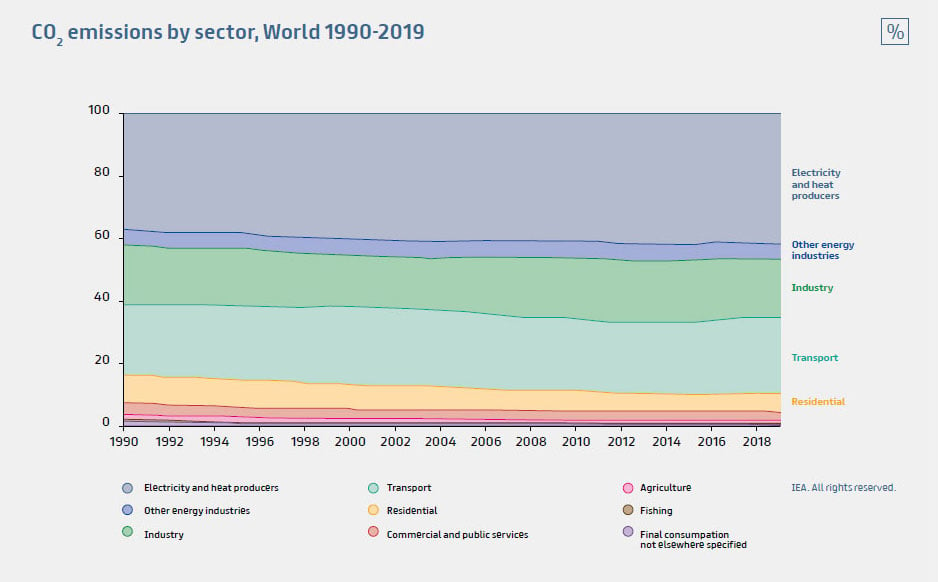
The post pandemic recovery is a good example of such disruptions.
Soaring natural gas prices have roiled EU, leading to price spikes in the cost of electricity that are raising utility bills for consumers, putting pressure on energy suppliers and disrupting industries.
Russia has limited pipeline exports to Europe because of high domestic demand, output disruptions and high liquified natural gas prices related to Asia’s economic recovery.
Russia is also potentially limiting natural gas delivery into Europe to support its case for starting flows via Nord Stream 2. European gas reserves are low and the need to replenish these reserves means higher European LNG and gas imports during the post pandemic recovery, fostering competition between Europe and Asia for LNG supplies and thus a further increase in gas prices.
A tightening of the European gas market will lead to growing volatility in energy bills, unless governments commit more clearly to renewable energy, according to the analysis of Bruegel, a European think tank.
In fact, economics are becoming favorable to many renewable technologies, opening the opportunity to reshape the energy mix without additional social cost, even exploiting benefits from post pandemic investments.
To make an example, the global levelized cost of energy (LCOE) for offshore wind farms is following a strong decreasing trend, demonstrating its potential.
Some specific markets already have a competitive LCOE: in Germany and the Netherlands there are already “zero subsidy” auctions; in France, reduced subsidy auctions; in other markets, such as the UK, it is already one of the most competitive technologies.
The level of competitiveness is expected to increase in other world markets by 2030, ensuring a lower global LCOE than fossil fuel technologies.
The energy transition is currently taking place mainly in the power sector, where renewable energy now accounts for 26% of electricity generation worldwide.
The cost of new solar and wind projects is undercutting the cost of existing coal-fired power plants, several studies have found. But the transition in transportation will likely be gradual and occur only in phases.
Decarbonising the energy system means using more electricity to meet our energy needs – including for transportation and the heating and cooling of buildings.
Demand for electricity will increase as wes witch away from using fossil fuels. For example, electrifying the transport sector alone – which now mostly relies on oil – could double global electricity demand, according to the outlook of the International Energy Agency.
Similar projections hold for electrifying heat in our buildings.
The EU has committed to cut greenhouse gas emission by 55% compared to 1990 by 2030, a key milestone in reaching climate neutrality in 2050.
The European Commission’s analysis shows that renewables-based electrification, complemented with the indirect electrification of hard-to-abate
sectors, is the most cost-effective and energy efficient way to cut energy sector emissions tonet-zero by 2050.
The European Commission’s scenarios show that more than three quarters of the final energy demand will be electrified.
Electricity will directly cover 57% of final energy uses while providing another 18% indirectly through hydrogen and its derivatives.
According to the Commission’s scenarios, this will require the electricity system to grow to 6,800 TWh from less than 3,000 TWh today.
And it will require wind to be 50% of the EU’s electricity mix, with renewables representing 81%.
Fortunately, over the past decade, it has become more economical to invest in new wind and solar power sources than building new, or operating existing, fossil fuel power plants.
Yet, the necessary condition for a complete transition to renewables is a strong and interconnected grid.
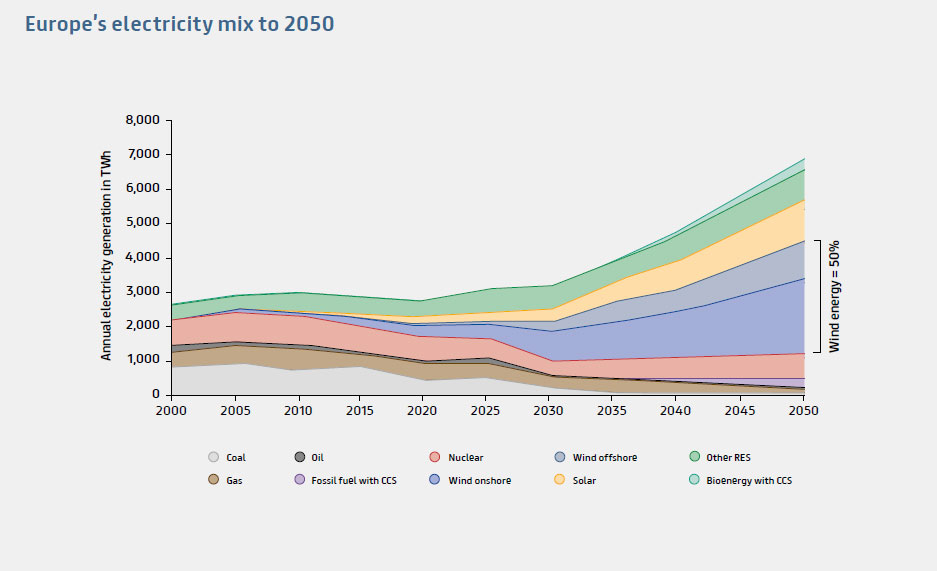
The power grid will be the backbone of an energy system dominated by renewables, especially by wind. A net-zero energy system, largely running on renewable electricity, can remain reliable and resilient, but Europe’s electricity grid needs to be expanded and reinforced – onshore and offshore– as well as optimised.
Europe currently invests €40bn a year on power grids. Annual investments across all voltage levels need to double over the next thirty years to €80bn a year, according to IRENA. Permitting and approval of transmission infrastructure projects, that are regularly delayed today, must be streamlined, applying among others a sea-basin approach to offshore wind grid planning.
The shift towards a fossil-free energy infrastructure in Europe has already started. Eleven EU countries have recently signed adeclaration calling on the EU to stop
funding fossil fuels under its trans-European energy infrastructure regulation (TEN-E), which is currently under revision.
The signatories – Austria, Belgium, Germany, Denmark, Estonia,Ireland, Luxembourg, Latvia, the Netherlands, Spain and Sweden – argue that the revision of the TEN-E regulation should exclude funding fossil fuel infrastructure that would lock Europe into carbon-emitting energy sources, which means that just power grids, not gas pipelines, would qualify for funding.
Despite this declaration, EU energy ministers agreed to prolong EU support for some selected cross-border natural gas projects, but the revision of the TEN-E regulation updates the categories of infrastructure that are “eligible for support”, adding a “new focus” on “offshore electricity grids, hydrogen infrastructure and smart grids”.
Ministers also said that until 2028, support could go to converting gas pipelines to carry hydrogen, and those projects could continue to carry natural gas blended with hydrogen until 2030. They must now negotiate the new rules with the European Parliament, who could improve the text with more emphasis on decarbonisation.
Now floating wind is entering the stage, with the potential to become a relevant part of the business.
Floating wind farms remove the restriction of being installed in shallow waters and also have a major advantage as they are assembled in the portand then towed to site by an ordinary tugboat, which also can tow them back to shore for heavy maintenance or final dismantling.
Thanks to this advantage, the floating technology will become competitive when the operating costs will reduce. In particular, this segment is gaining a significant boost, due to the fact that floating wind turbines use multiple components and similar services developed for the offshore oil&gas industry.
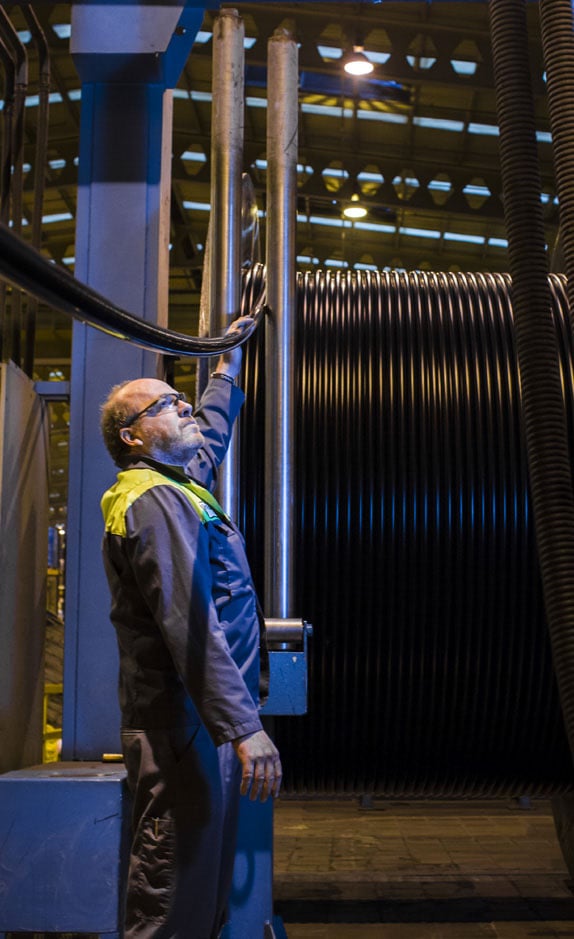
Prysmian looks forward to this new technology, leveraging on dynamic knowledge capabilities and experiences, as well as R&D development tailored to suit the integrated view of this subsegment, with focus on dynamic high voltage cables.
We are consolidating our position in the floating offshore wind market with the development of an export submarine power cablesystem for the EolMed project, located in the Mediterranean Sea, 18 kilometres off the French coast of Gruissan, that is scheduled to be up and running in 2023.
This is Prysmian’s third floating wind project, following the Kincardine and Provence Grand Large wind farms.
Interconnectors between countries are another key part of the energy transition: as backbone of power grids, cables are, and will be, anessential part of this development, supporting the implementation of larger, more integrated, efficient and sustainable power transmission systems.
We make a complete range of cables that allow the exchange of energy between countries, and sometimes continents.
This is particularly true with HVDC cables, where we currently have four different technologies in our portfolio for this sort of energy transmission.
Traditional paper cables, still very much in use, are indeed complemented with their high-performance version that use a sandwich of paper and plastic, called PPL, in place of paper. For cable with extruded insulation, our offering includes XLPE cables and our new thermoplastic solution, the already well-known P-Laser.
